The pros and cons of one-night, guest-chef dinners popping up all over L.A.
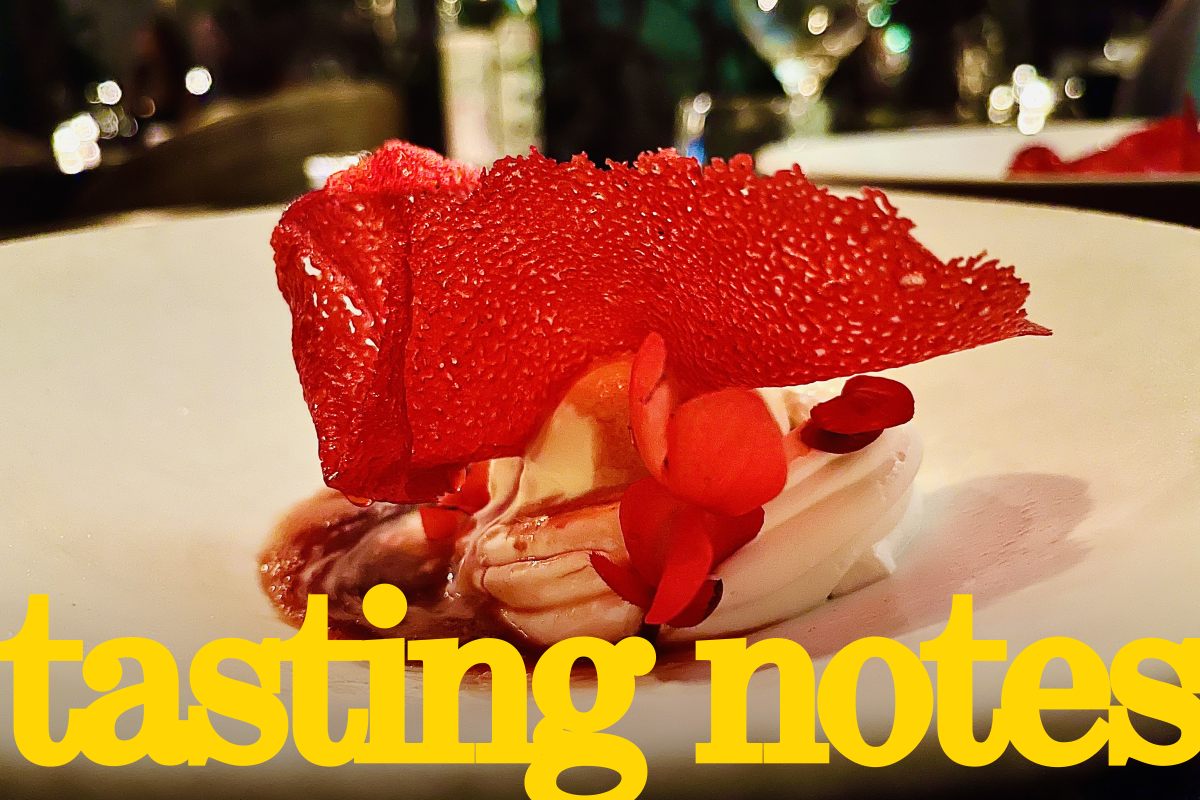
Why guest chef dinners are good for restaurants. Plus, the mob scene at Silver Lake’s newest wine bar, plans for Nordic cuisine in L.A., the best mooncakes for this year’s Mid-Autumn Festival. And is cheese-powder-dusted fried chicken “the next dimension of chicken”? I’m Laurie Ochoa, general manager of L.A. Times Food, with this week’s Tasting Notes.
Guest starring ...
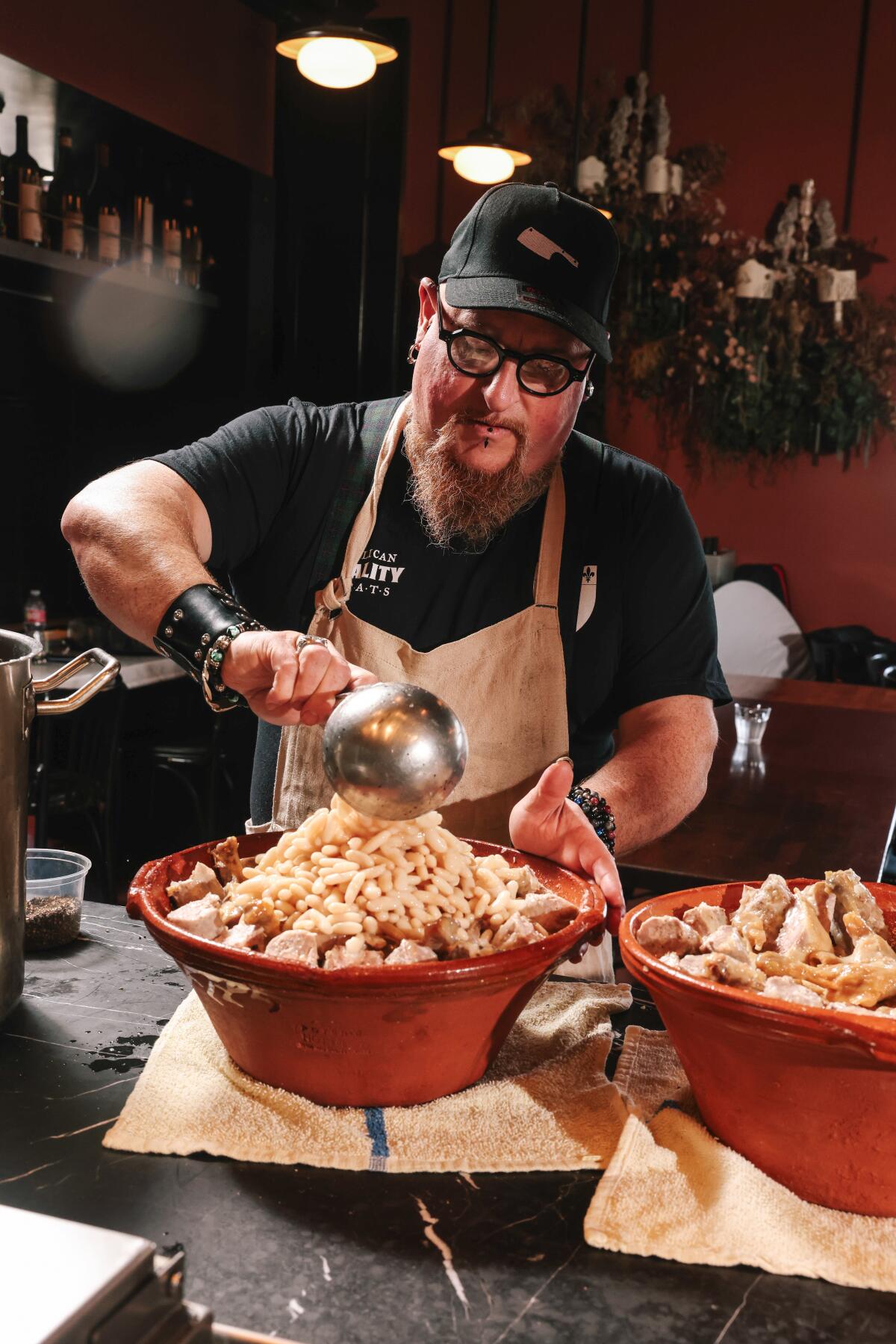
If you regularly eat out in Los Angeles and follow the social feeds of your favorite chefs and restaurants, chances are good that you are frequently tempted by news of a special dinner featuring a famous guest chef or farmer visiting from another city or country, often for just one night. These dinners, despite the fact that they are usually quite pricey, sell out quickly. Which only encourages us to follow L.A. restaurants much more closely so that we don’t miss out when a new announcement pops up.
In a tough economic environment, these dinners keep restaurants in the conversation and can fill a dining room on slower midweek nights. It’s also a way for customers to taste the cuisine of some of the world’s most acclaimed chefs without spending money on airfare or hotels.
These dinners can be thrilling. In March, for instance, chef David Campigotto from the southern French town of Castelnaudary brought his conical cassoulet pots to L.A.’s Chi Spacca for a three-night stand and showed Angelenos what the dish is supposed to taste like. Damn fine pork and beans.
Ironically, the night’s host, chef Nancy Silverton, has never been to Campigotto’s Chez David. She fell in love with his cassoulet — which turns a burnished mahogany after six hours in the oven — during one of his guest chef stints at the Chicago restaurant Publican.
“When [Publican chef] Paul [Kahan] opened the oven to show me the cassoulet,” she said on the night of the dinner, “I thought, wow, I have never seen anything like that before.”
But you can’t always assume that the food you are served at these dinners comes close to what you would get at the visiting chefs’ restaurants. The host restaurant needs to be staffed by a highly skilled kitchen team able to support the visiting chefs, who often arrive with little knowledge of our town’s food supply network and without their full crew. Even for chefs who bring their own ingredients and equipment, it’s not easy to re-create the flavors of regional dishes far from home.
These dinners work best when host chefs and guest chefs alike make time for advance work. Guest chefs can’t expect to just show up and cook.
Host chefs also need to suppress their egos — at least enough to let their guests cook in their own styles. So-called four-hand dinners, in which the host and guest chef serve alternating courses, can sometimes go awry when the host chef is too eager to show off to their famous visitor. This frustrates the guest chef, and it can frustrate customers who pay to experience food they normally wouldn’t get in their own cities.
Yet when guest chef and host chef are in sync, the collaborations can be fantastic. Recently, Meteora founder Jordan Kahn and chef de cuisine Ki Kim hosted Mario Castrellon of Panama City’s Maito, which is ranked No. 6 on the most recent 50 Best Latin American Restaurants list. It’s part of a series of Meteora dinners featuring Latin American chefs.
It’s safe to say that most Angelenos have never experienced Panamanian cooking, which is underrepresented in Southern California and deeply influenced by African, Chinese and Indian cuisines.
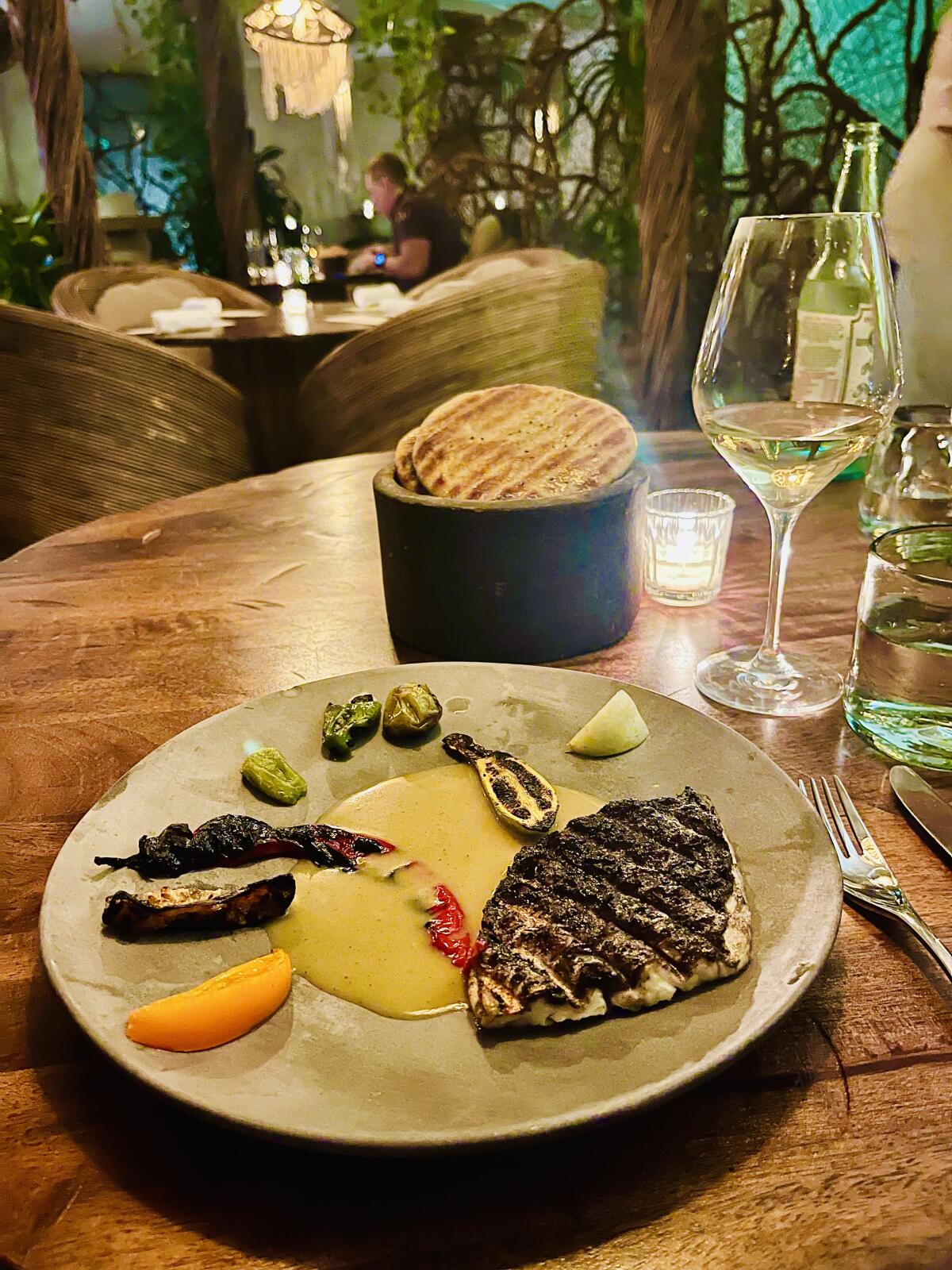
Castrellon’s opening course was sancocho, striped down to its essence in a smoky, deeply flavored broth instead of the traditional chicken-and-vegetable-packed soup. He also served shrimp dumplings with an “Afro-Asian” shellfish sauce. One of the more collaborative courses between the chefs was silk snapper with charred peppers and a turmeric-based curry sauce in which the ingredients were fired in a wok to bring out their flavors, then simmered. At the end was a version of one of Castrellon’s signature desserts, strawberries and cream, a gorgeously constructed plate with sheep’s milk mousse, grilled strawberries and olive oil ice cream.
Many chefs say these dinners not only help keep their businesses thriving, they’re also good for their creative process.
Earlier this week, Brian Dunsmoor hosted a dinner with Anson Mills’ San Diego-raised Glenn Roberts, who is a hero to many chefs and cooks for reviving the nearly extinct Carolina Gold rice and Carolina Gourdseed White corn that is so good for grits. A few weeks before the dinner Dunsmoor was in the Times Test Kitchen (for a future “Chef That!” episode) and talked about the importance of collaborative dinners — and his nerves about hosting Roberts for what he called “a narrative of the history of Lowcountry cuisine through grain.”
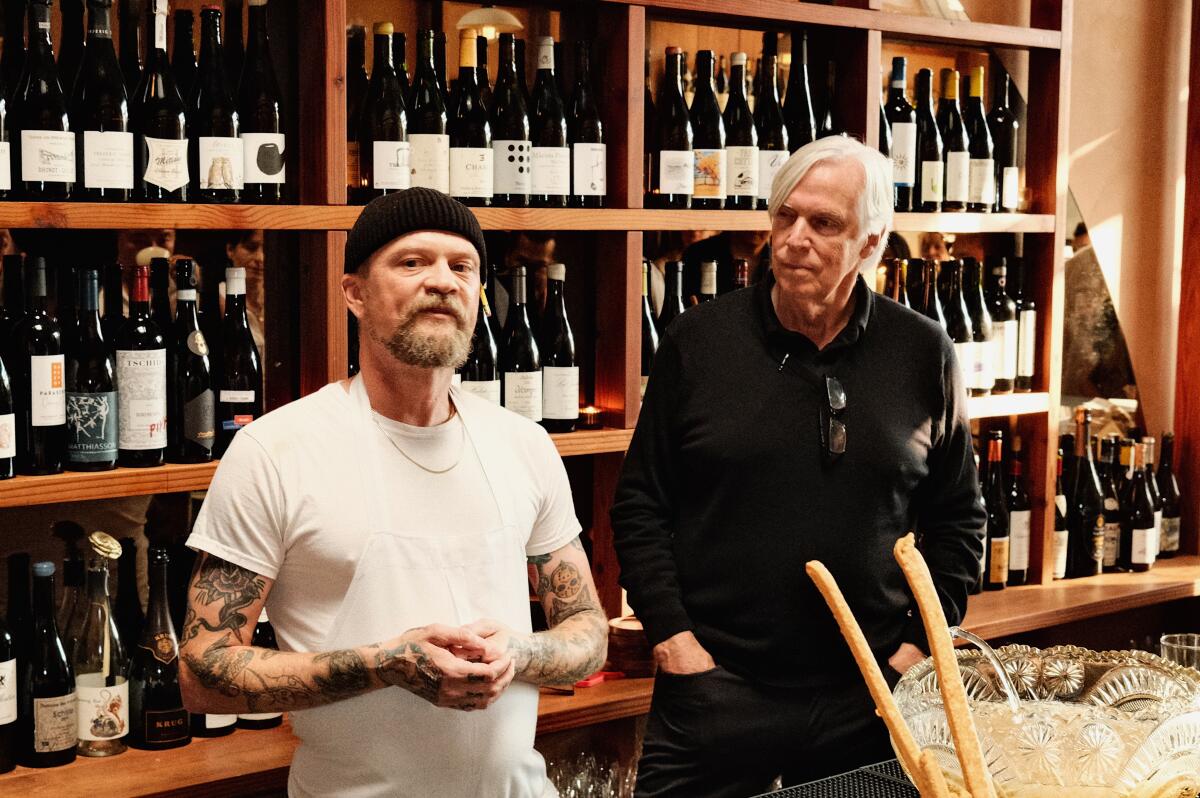
“I’m super freaking out about it. You don’t want to drop the ball in front of Glenn Roberts,” said Dunsmoor, who plans a series of future dinners with “experts in their field” ... “driven by American regional food history.”
“You gotta keep pushing because once you fall into a routine, I feel like you really lose your edge,” Dunsmoor said. “You’ve got to keep yourself inspired. I find myself constantly trying to trick myself into thinking that playing this whole restaurant game is a hobby. Not work. Because once it becomes work, I’ll lose interest. You gotta make yourself love it.”
You’re reading Tasting Notes
Our L.A. Times restaurant experts share insights and off-the-cuff takes on where they’re eating right now.
You may occasionally receive promotional content from the Los Angeles Times.
‘Chef That!’ Ceviche!
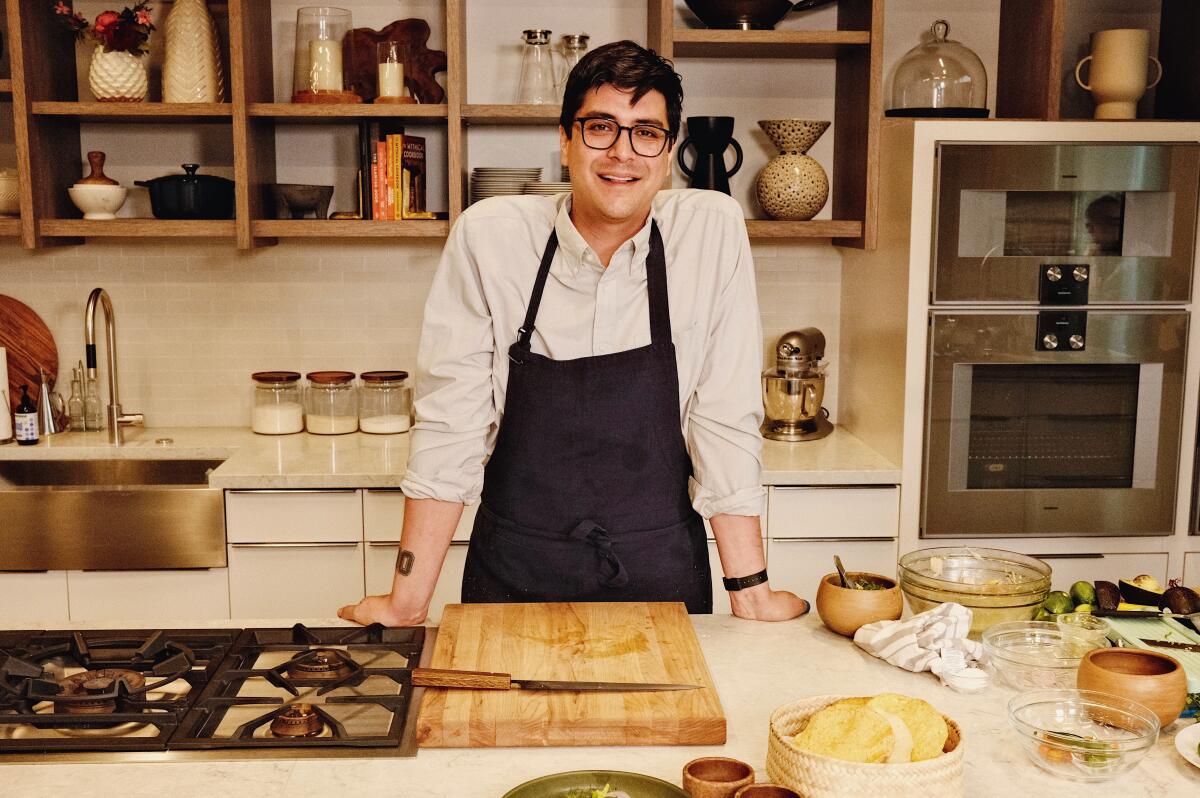
As simple as it looks, ceviche can intimidate many home cooks. But Jesus “Chuy” Cervantes, chef de cuisine of the Enrique Olvera restaurant Damian and Ditroit taquería in downtown L.A.’s Arts District, insists, “It’s meant to be a lot of fun.” In the most recent episode of our “Chef That!” video series, Cervantes shows us his ceviche techniques, including choosing the fish, making the cure and ensuring that the fish doesn’t get too soft. Cervantes and the Damian team are also going to be serving VIP ticket holders at the Sunday afternoon session of next week’s L.A. Times Food Bowl, Sept. 20-22. Get your tickets at this link.
Also ...
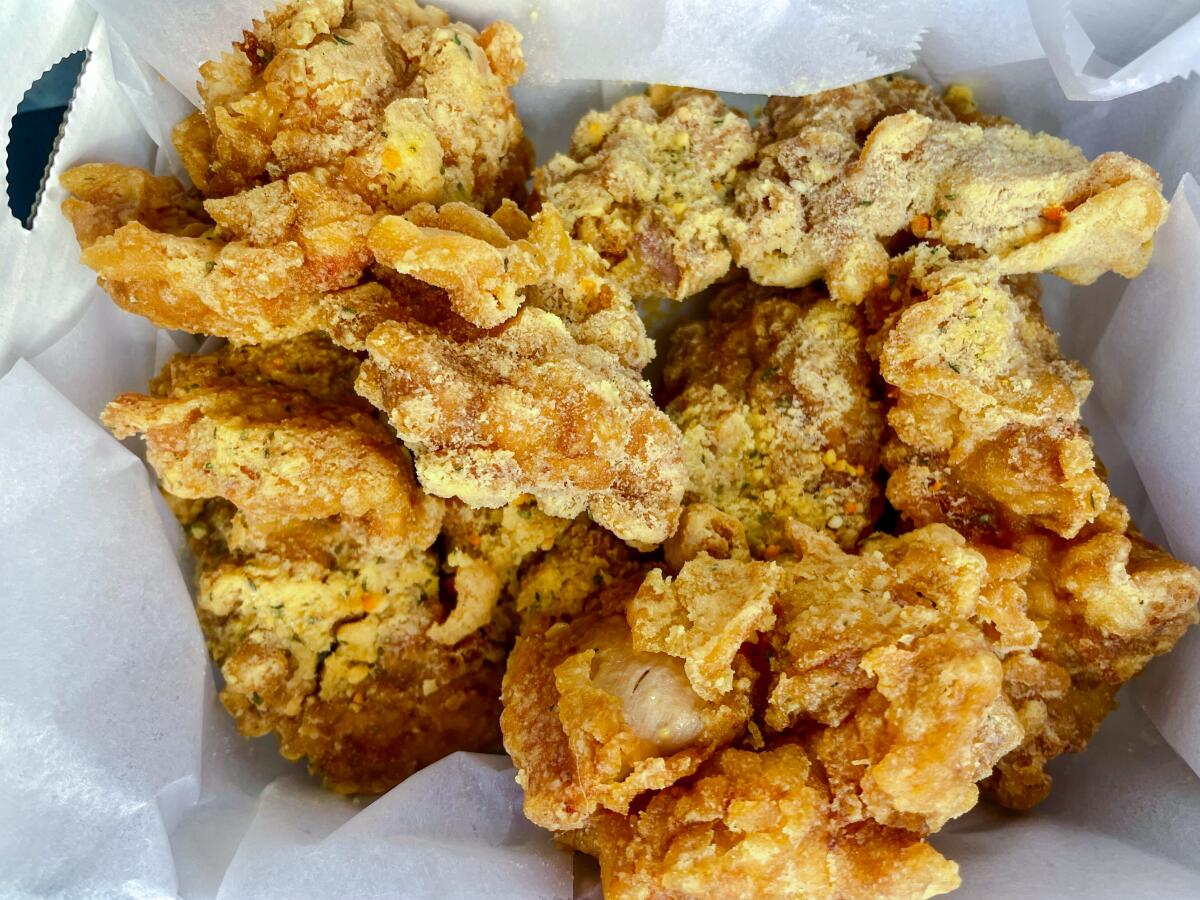
- Our fried chicken queen Jenn Harris is now hooked on cheese-powder-dusted fried chicken, a trend that has revealed to her “the next dimension of chicken.”
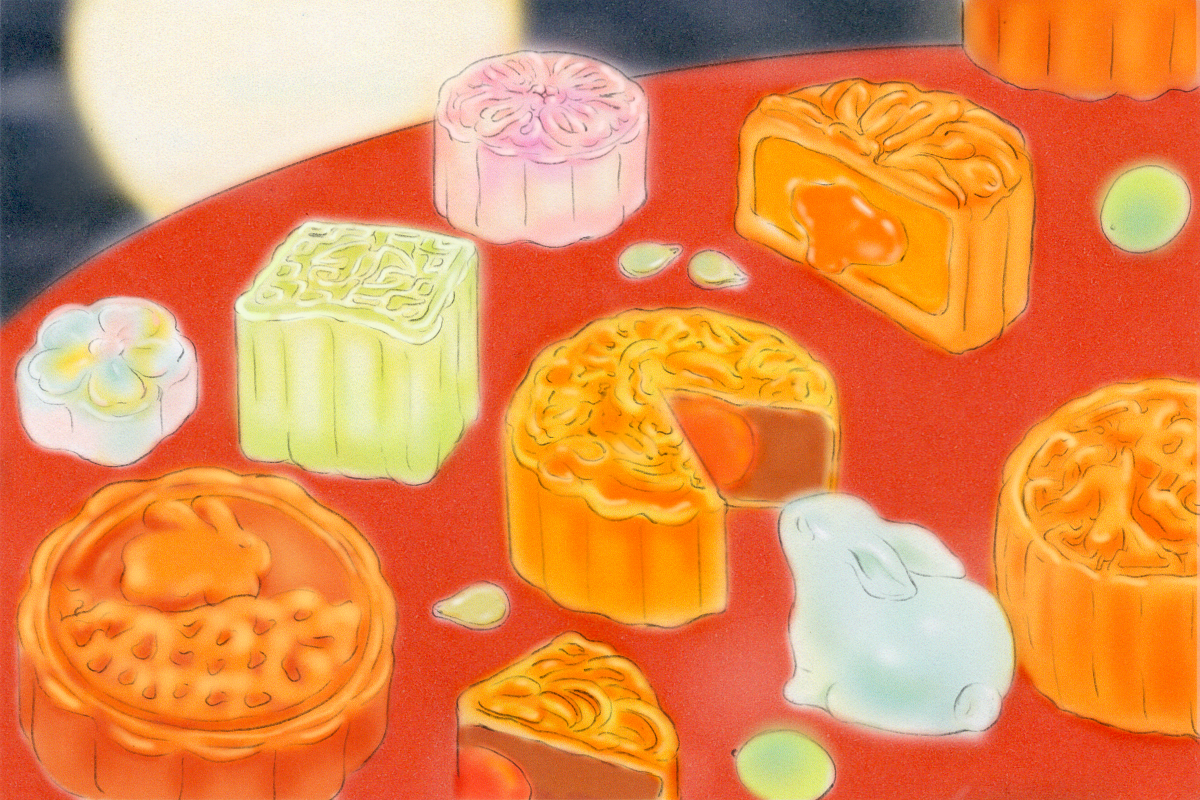
- Tuesday — or Sept. 17 on the Gregorian calendar — is the 15th day of the eighth month in the Chinese calendar, the day that Chinese cultures around the world celebrate the Mid-Autumn Festival ... aka the Mooncake Festival. Food contributor Tiffany Tse put together a guide to 11 of L.A.’s best places to get mooncake, including some with THC infusions and vegan cakes too.
- More guides: Assistant food editor Danielle Dorsey went through Bill Addison‘s 101 Best L.A. Restaurants guide and put together a list of 13 excellent Latin American restaurants.
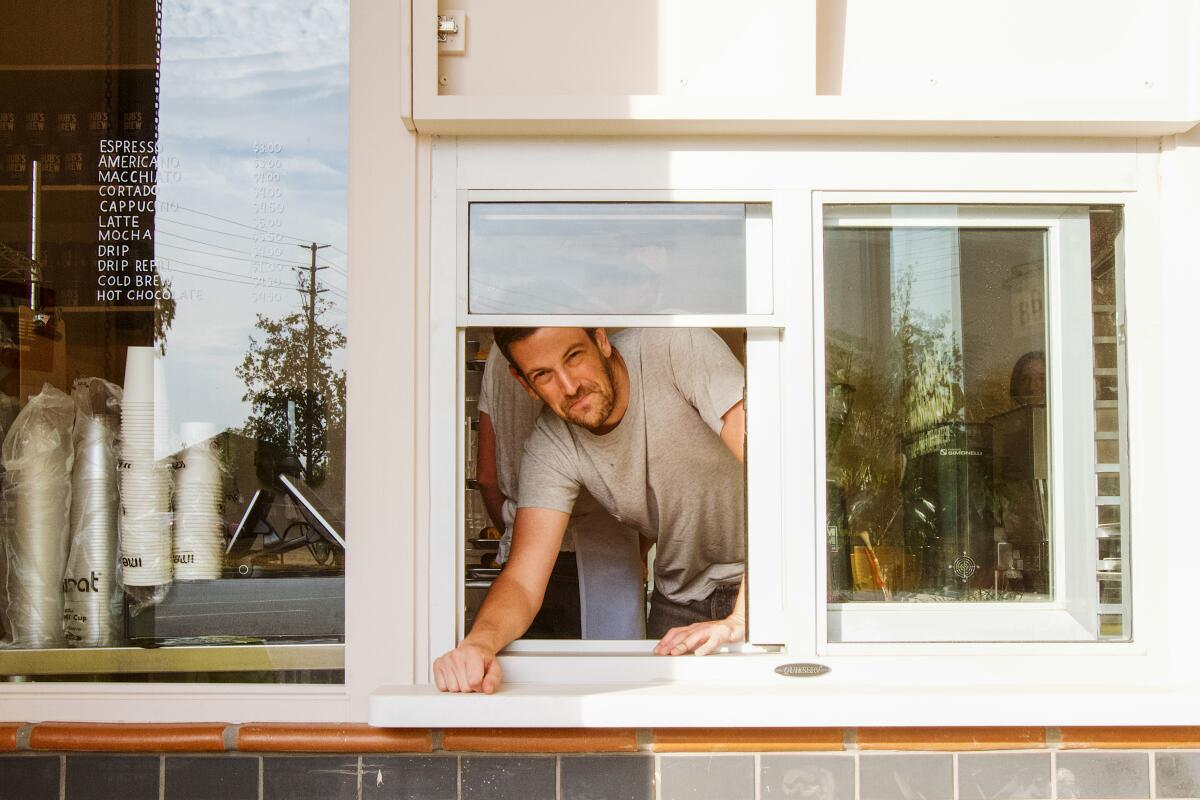
- First we had to wait in line at the Sunday Hollywood Farmers Market to get our fix of Bub & Grandma’s sesame loaves and flatbread. (Now the loaves are all over town, including at my local Altadena Beverage & Market.) Then we had to wait in line for a seat at Bub & Grandma’s diner in Glassell Park (though midweek waits have become much more manageable). Now, I suspect we’ll be waiting in line at Bub & Grandma’s Pizza, which will soon take over the two recently shuttered Town Pizza locations, in Highland Park and Cypress Park. Stephanie Breijo talked with Bub baker and founder Andy Kadin about his plans, including serving pizza with a “structured bottom” and a term I love for dots of char on a well-baked crust: “leoparding.”
- Speaking of lines, Breijo talked with chef David Potes of Barr Seco, the new Silver Lake wine bar where an estimated 500 to 600 people showed up on opening night and some guests brought their own stools. People are showing up for natural wines curated by sommelier Kae Whalen and food that Potes calls “Mexican-Japanese freestyle.” Also in Breijo’s openings column are notes on Koreatown’s Moohan, Los Feliz’s plant-based Italian food spot Civico 2064 and Barbara Genes Soul Food Cafe in Arlington Heights.
- Breijo also talked with Swedish chef Marcus Jernmark, who worked at Michelin three-stars Frántzen in Stockholm and Per Se in New York, about his plans to open a New Nordic cuisine restaurant, Lielle, in Los Angeles early next year. “It’s the right time for L.A.,” he says.
- Even with these openings, L.A. restaurants continue to close. This week Breijo reported that chef Diego Argoti’s lauded and “wildly inventive” Poltergeist must close at the end of September; the owners of the restaurant’s host bar and arcade Button Mash decided costs were too high to renew their lease. And this week, as Caroline Petrow-Cohen reported, Hollywood star Kevin Hart abruptly closed his two-year-old Hart House chain of fast food restaurants, which featured a plant-based menu.

Eat your way across L.A.
Get our weekly Tasting Notes newsletter for reviews, news and more.
You may occasionally receive promotional content from the Los Angeles Times.




